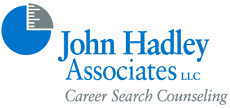Are You Following The 5 C's? A Casual Message
From Career Tips, 2022 Volume 5, May 2022
I started this series in October. As a reminder, here are The 5 C's of an Effective Marketing Message:
Content
Context
Confidence
Casual
Conversational
I'm going to circle back to Content at the end of the series, and so far I've covered Context and Confidence. So that brings us to Casual.

When you work too hard on your message, it can become stilted and lose authenticity. This is particularly true when all of your work is written, as we almost always talk differently than we write. What sounds good on the written page can become awkward when read out loud. (This is one reason it can be so boring to hear someone read a paper at a conference.)
When you work at your message, it's also a common trap to try to impress. You look for the right words, and tend to choose ones that sound impressive, instead of those that convey a message in the most understandable way.
For example, have you ever heard people use the word "ideation"? I have. It evokes for me someone who is overly impressed with their own vocabulary.
"I have unusual proficiency in ideation."
Please. Why not just say:
"I’m the bright idea guy / gal."
Simple, to the point, and the meaning is crystal clear.
When you include highfalutin words in your message, many listeners will need to mentally pause to figure out what you mean, which causes them to then miss part of what comes next. Plus it gives off the impression that you might be a bit full of yourself, and that this sort of language is what we will have to put up with in day to day dealings with you. That's not a good signal to send to potential employers, networking contacts or referral partners.
A second aspect of Keeping It Casual is to avoid jargon and technical language.
Now many of you may find this difficult, or counter-intuitive. After all, that jargon is like your secret handshake that shows those in your field that you know what you're talking about.
Here's the problem:
- Jargon and technical language tend to be exclusionary to anyone not directly in your area, so that your much of your message can be lost on many in the audience.
- They require the listener to pay closer attention to get the meaning you intend, which many may not be so inclined to do.
- They peg you as someone who communicates at a technical rather than executive level, so that if you are seeking a leadership role, you are less likely to impress.
My advice is to keep the jargon and technical language to a minimum. You can throw one or two key words into your pitch if absolutely necessary, but generally save that for the follow-up conversation when someone really wants to know about your technical savvy.
Finally, be sure that once you have your pitch the way you want it, you practice it out loud. Ideally, record it and play it back, so you can see how it sounds separately from when you are concentrating on delivering it.
I would also advise practicing just until it comes naturally, but to not actually memorize it. Rely on bullet points of what you want to cover, letting it come out a bit differently each time you present it. This will help keep it Casual and authentic to the listener.
Proceed to the next in this series.
Sign up for Career Tips and receive more articles like this every month!
